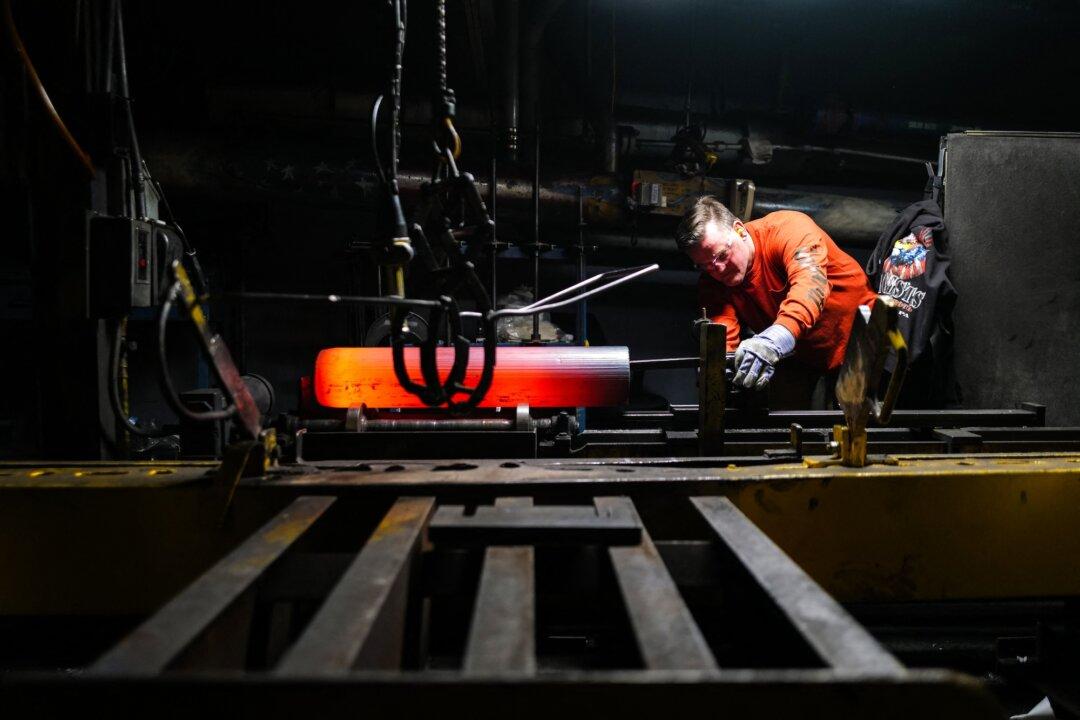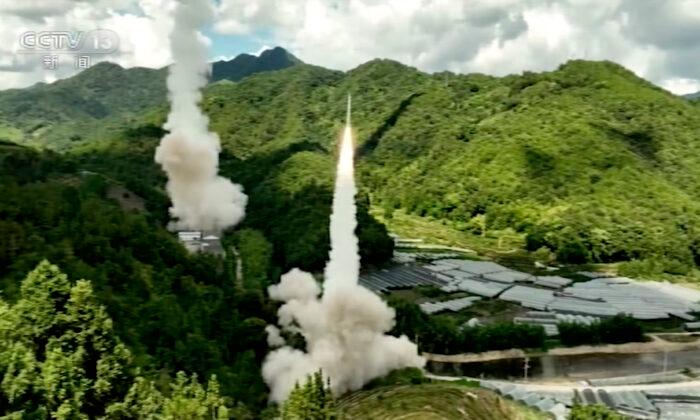If the United States and the democracies are to prevail over the China–Russia alliance and deter wars that could consume generations, it’s imperative that the democracies win the second race to the moon, which, this time, is for keeps.
The United States and the democracies would gain a slight lead, should there be a successful launch on Sept. 2 or later, delayed from Aug. 29, of the unmanned Artemis 1 mission, which will test new technologies and methods for reaching the moon.
Primarily, NASA is testing its Space Launch System’s (SLS) very heavy space launch vehicle (SLV), and the new Orion manned space capsule on a 42-day mission that will test new orbits around the moon.
By about 2025, the Artemis-III mission will see a crew of four Americans return to the moon, but with their descent to the moon undertaken in the not-yet-completed Human Landing System based on the reusable, manned Starship spacecraft of Elon Musk’s SpaceX Corp.
Soon, the United States will have to decide how it will continue to access the moon—with the seven-year late, $10 billion over budget, $1 billion per one-way ride, the ultimately 50-ton SLS, or a reusable SLV that promises great savings such as the 100-ton Starship.
This is a consequence of the United States’ irresoluteness that could still cause it to lose this latest moon race.
The United States refused to exploit its position as the first to reach the moon in 1969, with its final Apollo 17 mission in December 1972. It didn’t create a permanent presence to advance the exploration and economic exploitation of the moon.
Furthermore, in a decision that likely spurred our enemies into action, on April 15, 2010, President Barack Obama canceled George W. Bush’s Constellation program, which was intended to return Americans to the moon by 2020.
In a speech that day at the Kennedy Space Center attended by current NASA administrator, then-Sen. Bill Nelson, Obama demonstrated his capacity for hubris when he declared, in contrast to the 1960s moon race with the Soviet Union, that “we’re no longer racing against an adversary.”
There was then and is today a real adversary—the Chinese Communist Party (CCP)—and Obama gave it a decade to catch up.
Today, the United States and China are in a race to secure dominance on the moon as a key means to securing “cis-lunar space” between the Earth and the moon—the “high ground” required to obtain control over low Earth orbit where the majority of military satellites reside, necessary for military victory on Earth—and ultimately, for the CCP, hegemony over Earth.
Control of the moon is also helpful in securing control over the Lagrangian points of equal gravitational pull in the Earth-moon system, better to place surveillance and space combat systems that can deny access to the moon and to Mars. With it comes control over the emerging “space economy,” which the Chinese estimate could be worth $1 trillion annually by 2045.

Both the United States and China are developing multiple heavy-lift SLVs to reach the moon, the United States with its SLS and better reusable SLVs. For at least two decades, China has been developing its 27-ton Long March 5DY heavy-lift SLV, and its 50-ton Long March 9 super heavy-lift SLV.
Here, the United States could fall behind; reports indicate NASA so far only plans to build 11 of its SLSs, with no plans yet to accelerate full round-trip use of the less expensive Starship. NASA may not have a long-term manned habitat on the moon until 2035.
But according to a November 2020 Chinese report, from 2030 to 2035, China may build as many as 60 of the initial one-way version of its Long March 9, transitioning to a reusable version of this SLV after 2035.
In such a balance of effort, the United States will be strolling to the moon while China may be blitzing the moon after 2030, building multiple long-term moon bases to secure the best locations to exert strategic control and secure access to key resources such as lunar water ice.
Both the United States and China plan to have networks of surveillance and navigation satellites around the moon to support lunar operations. And while the United States and its partners in the Artemis moon program plan to loft a part-time manned Gateway small space station into lunar orbit, China may be planning to do the same.
Both China and the United States are gathering coalitions of partners for their respective moon programs; the U.S.-led Artemis program currently leads with 20 member states committed to the peaceful exploration and exploitation of moon resources, and to the abiding of common rules.
China and Russia reject the Artemis program but will build their International Lunar Research Station—expect China to build a larger façade of political support by funding participants from Pakistan, Saudi Arabia, Iran, and perhaps even North Korea.
One main difference is that the United States and its Artemis partners will be challenged to continue the funding required for the expansive moon and Mars programs, especially if China and Russia can engineer multiple wars on Earth that divert their resources.
Meanwhile, as dictatorships, China and Russia are better able to impose economic privation on their populations as required to continue funding their space programs and wars of aggression.
Americans should be grateful that in 2017, President Donald Trump revived the U.S. moon program and decided to turn the Artemis program into a multinational coalition exercise to create positive rules for behavior on the moon that may hold the best chance for avoiding warfare on the moon and beyond.
But it’s a hard reality that China’s moon program, like its larger space program, is controlled by its People’s Liberation Army (PLA) and is designed primarily to produce dual-use benefits for the PLA, including military benefits on the moon.
The United States has little choice but to win this current moon race to secure access to geostrategic advantage and to resources. Doing so offers the democracies a clear means to counter the CCP’s drive for hegemony on Earth and in space. If the United States fails, the CCP will press its advantage, thus increasing the chances of continual war on Earth.





